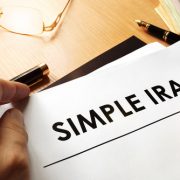How to Think About Self-Directed SIMPLE-IRAs
It might be one of the most vexing names for people just starting to do some retirement research: Self-Directed SIMPLE IRAs. But when is an IRA really simple? Fortunately, you would be surprised. With a SIMPLE IRA, it is possible for certain small employers—which includes the self-employed—to create a savings incentive match plan that encourages employees to invest in retirement. And with a Self-Directed SIMPLE IRA, it is easy to invest in a wide range of retirement asset classes.
However, if we are going to make sense of the SIMPLE IRA, it helps to know how to think about these accounts, and how they work. Here is what you will need to know.
Defining the SIMPLE IRA
The SIMPLE in SIMPLE IRA stands for “Savings Incentive Match Plan for Employees,” which is a nice way of summing it up. This is essentially a way for you to use your small business and a SIMPLE IRA to set up a nice savings incentive plan to help encourage employees to invest in their retirement. You can read more about Self-Directed SIMPLE IRAs by clicking on our Self-Direct SIMPLE IRA basics page.
What does this all mean? Let us look at the characteristics of this type of IRA:
- Employees can make contributions up to the allowable limit. When you set up this plan, it is possible for employees to make contributions up to the limit. You, as the employer, can then contribute to the plan and match these contributions, dollar-for-dollar, until you have reached 3% of the employee’s compensation. Another option is simply contributing 2% of compensation without matching. Your company would make contributions directly to the IRA established for the employee.
- Taxes are deferred. This is one of the chief questions people have about most IRAs: are taxes upfront or deferred? In a SIMPLE IRA plan, the employee’s contributions are excluded from their gross income. That means that this is not taxed until the employee withdraws the funds. This is a great way for employees of a company to save money on their tax bills while putting aside money for retirement.
- It is possible to Self-Direct. Of course, we have to mention it here: there’s no reason you can’t Self-Direct a SIMPLE IRA plan for investing in a large variety of assets that include real estate, limited liability companies, precious metals, and more.
Who Can Use Self-Directed SIMPLE IRAs?
Here is a list of the types of people who typically qualify:
- Your company should be less than 100 employees. This is a plan that is great for small businesses, which is why so many people with less than 100 employees will turn to the SIMPLE IRA to create a savings plan that employees can benefit from.
- Businesses with no other retirement plans. A SIMPLE IRA is just that: a simple way for you to build a retirement savings plan for your company. Typically, when businesses want to entice the top talent from other companies, they have to offer incentives. One of the most important incentives is a retirement plan with the potential for matching. Because you can accomplish that with a SIMPLE IRA, it makes a great vehicle for anyone with a small business who wants to offer their employees more.
- Know the deferral limits. Employee elective deferrals, which are also referred to as salary reduction contributions, have specific limits, such as $13,500 for 2021, subject to cost-of-living adjustments. It is important that both employees and employers understand these before proceeding.
A SIMPLE IRA is a powerful way to put money aside for retirement—as well as add to the list offerings for a business. Interested in learning more about Self-Directed IRAs? Contact American IRA, LLC at 866-7500-IRA (472) for a free consultation. Download our free guides or visit us online at www.AmericanIRA.com.




